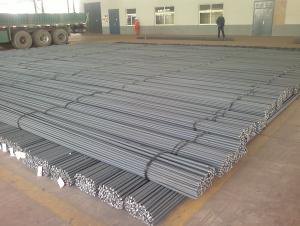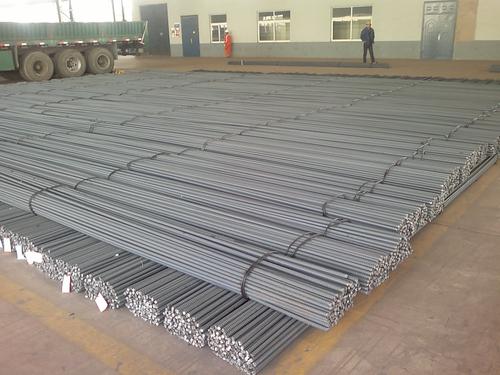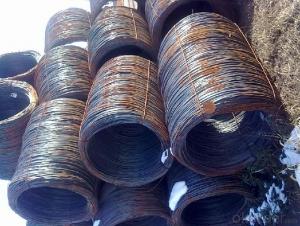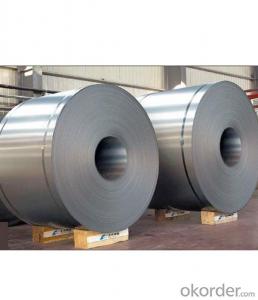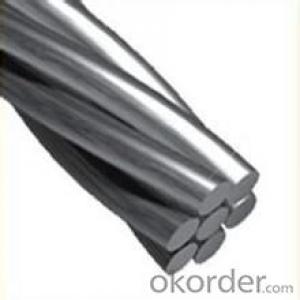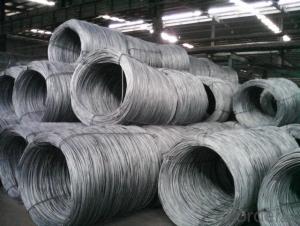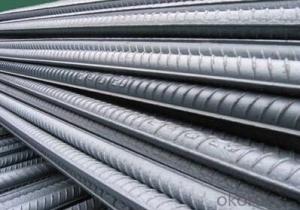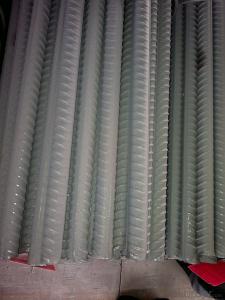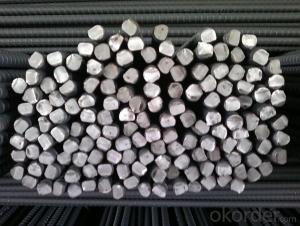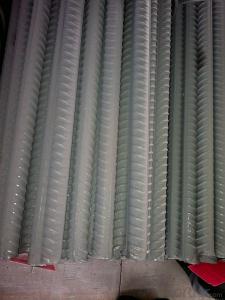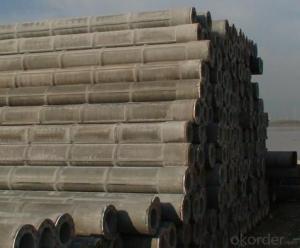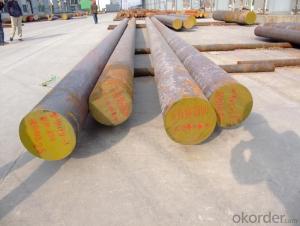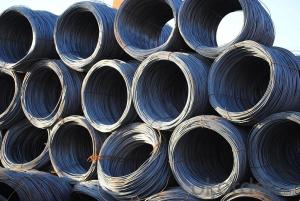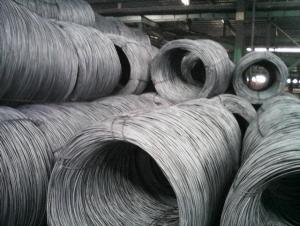Alloy Hot Rolled Deformed Steel Rebars for Construction of Buildings
- Loading Port:
- Tianjin
- Payment Terms:
- TT or LC
- Min Order Qty:
- 25 m.t.
- Supply Capability:
- 100000 m.t./month
OKorder Service Pledge
OKorder Financial Service
You Might Also Like
Product Description:
OKorder is offering Alloy Hot Rolled Deformed Steel Rebars for Construction of Buildings at great prices with worldwide shipping. Our supplier is a world-class manufacturer of steel, with our products utilized the world over. OKorder annually supplies products to European, North American and Asian markets. We provide quotations within 24 hours of receiving an inquiry and guarantee competitive prices.
Product Applications:
Alloy Hot Rolled Deformed Steel Rebars for Construction of Buildings are ideal for structural applications and are widely used in the construction of buildings and bridges, and the manufacturing, petrochemical, and transportation industries.
Product Advantages:
OKorder's Alloy Hot Rolled Deformed Steel Rebars for Construction of Buildings are durable, strong, and resist corrosion. They are made of high quality material.
Main Product Features:
· Premium quality
· Prompt delivery & seaworthy packing (30 days after receiving deposit)
· Corrosion resistance
· Can be recycled and reused
· Mill test certification
· Professional Service
· Competitive pricing
Product Specifications:
Specifications of HRB500 Deformed Steel Bar:
Standard | GB | HRB500 |
Diameter | 6mm,8mm,10mm,12mm,14mm,16mm,18mm,20mm, 22mm,25mm,28mm,32mm,36mm,40mm,50mm | |
Length | 6M, 9M,12M or as required | |
Payment term | TT or L/C | |
Application | mainly used in construction industry to reinforce concrete structures and so on | |
Quality | First quality, the goods are from Chinese big manufacturers. | |
Type | Hot rolled deformed steel bar | |
Brand name | DRAGON | |
Chemical Composition: (Please kindly find our chemistry of our material based on HRB500 as below for your information)
Grade | Technical data of the original chemical composition (%) | ||||||
C | Mn | Si | S | P | V | ||
HRB500 | ≤0.25 | ≤1.60 | ≤0.80 | ≤0.045 | ≤0.045 | 0.08-0.12 | |
Physical capability | |||||||
Yield Strength (N/cm²) | Tensile Strength (N/cm²) | Elongation (%) | |||||
≥500 | ≥630 | ≥12 | |||||
Theoretical weight and section area of each diameter as below for your information:
Diameter(mm) | Section area (mm²) | Mass(kg/m) | Weight of 12m bar(kg) |
6 | 28.27 | 0.222 | 2.664 |
8 | 50.27 | 0.395 | 4.74 |
10 | 78.54 | 0.617 | 7.404 |
12 | 113.1 | 0.888 | 10.656 |
14 | 153.9 | 1.21 | 14.52 |
16 | 201.1 | 1.58 | 18.96 |
18 | 254.5 | 2.00 | 24 |
20 | 314.2 | 2.47 | 29.64 |
22 | 380.1 | 2.98 | 35.76 |
25 | 490.9 | 3.85 | 46.2 |
28 | 615.8 | 4.83 | 57.96 |
32 | 804.2 | 6.31 | 75.72 |
36 | 1018 | 7.99 | 98.88 |
40 | 1257 | 9.87 | 118.44 |
50 | 1964 | 15.42 | 185.04 |
Usage and Applications of Alloy Hot Rolled Deformed Steel Rebars for Construction of Buildings:
Deformed bar is widely used in buildings, bridges, roads and other engineering construction. Big to highways, railways, bridges, culverts, tunnels, public facilities such as flood control, dam, small to housing construction, beam, column, wall and the foundation of the plate, deformed bar is an integral structure material. With the development of world economy and the vigorous development of infrastructure construction, real estate, the demand for deformed bar will be larger and larger..
Packaging & Delivery of Alloy Hot Rolled Deformed Steel Rebars for Construction of Buildings:
Packaging Detail: products are packed in bundle and then shipped by container or bulk vessel, deformed bar is usually naked strapping delivery, when storing, please pay attention to moisture proof. The performance of rust will produce adverse effect.
Each bundle weight: 2-3MT, or as required
Delivery Detail: within 45 days after received advanced payment or LC.
Label: to be specified by customer, generally, each bundle has 1-2 labels
Trade terms: FOB, CFR, CIF
FAQ:
Q1: How do we guarantee the quality of our products?
A1: We have established an advanced quality management system which conducts strict quality tests at every step, from raw materials to the final product. At the same time, we provide extensive follow-up service assurances as required.
Q2: How soon can we receive the product after purchase?
A2: Within three days of placing an order, we will begin production. The specific shipping date is dependent upon international and government factors, but is typically 7 to 10 workdays.
Q3: Can stainless steel rust?
A3: Stainless does not "rust" as you think of regular steel rusting with a red oxide on the surface that flakes off. If you see red rust it is probably due to some iron particles that have contaminated the surface of the stainless steel and it is these iron particles that are rusting. Look at the source of the rusting and see if you can remove it from the surface.
Images:
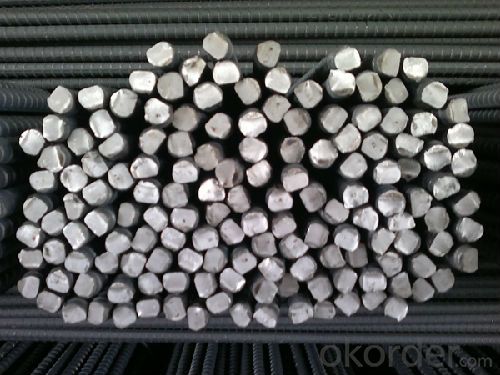
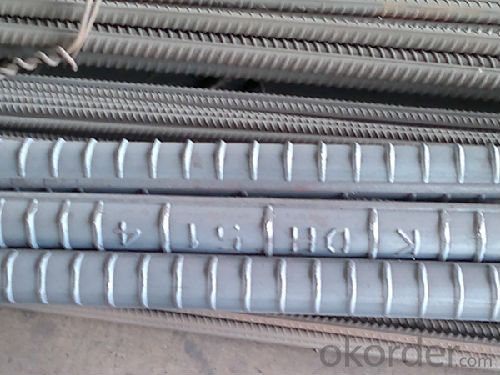
- Q: What are the different types of steel wire rod coatings used for improved machinability?
- There are several different types of steel wire rod coatings that can be used to improve machinability. These coatings are designed to reduce friction and heat during the machining process, which helps to improve tool life and increase productivity. One common type of coating used for improved machinability is a titanium nitride (TiN) coating. TiN coatings provide a hard, wear-resistant surface that reduces friction and heat buildup, resulting in improved tool life and increased cutting speeds. Additionally, TiN coatings can help prevent built-up edge formation and improve chip flow, further enhancing machinability. Another type of coating used for improved machinability is a titanium carbonitride (TiCN) coating. TiCN coatings have similar properties to TiN coatings, but they offer higher hardness and improved resistance to abrasive wear. This makes TiCN-coated wire rods particularly suitable for machining hard materials or in applications with high cutting speeds. Diamond-like carbon (DLC) coatings are also used for improved machinability. DLC coatings provide a low coefficient of friction, excellent hardness, and good thermal stability. These properties make DLC-coated wire rods ideal for high-speed machining operations, as they reduce friction and heat generation. Other commonly used coatings for improved machinability include aluminum titanium nitride (AlTiN) and zirconium nitride (ZrN) coatings. AlTiN coatings offer high hardness, excellent oxidation resistance, and low friction, making them well-suited for machining stainless steels and other difficult-to-machine materials. ZrN coatings provide good hardness and wear resistance, along with low friction, making them suitable for various machining applications. In conclusion, the different types of steel wire rod coatings used for improved machinability include titanium nitride (TiN), titanium carbonitride (TiCN), diamond-like carbon (DLC), aluminum titanium nitride (AlTiN), and zirconium nitride (ZrN) coatings. Each of these coatings offers specific advantages and is chosen based on the specific machining requirements and material being worked on.
- Q: How is steel wire rod used in the manufacturing of musical instruments?
- Steel wire rod is commonly used in the manufacturing of musical instruments due to its strength, durability, and flexibility. It is primarily used to create the strings for various instruments like guitars, pianos, violins, and cellos. The wire rod goes through a series of processes, including drawing, annealing, and coating, to achieve the desired thickness and quality. The resulting steel strings produce the desired pitch and tone when plucked or bowed, making them an essential component in creating beautiful music.
- Q: What are the main factors affecting the quality of steel wire rod?
- The main factors affecting the quality of steel wire rod include the choice of raw materials, the manufacturing process, and the use of proper heat treatment techniques. The composition and cleanliness of the raw materials used, such as iron ore and scrap metal, greatly influence the final quality of the steel wire rod. Additionally, the manufacturing process, including the use of advanced technologies and quality control measures, plays a crucial role in ensuring the desired characteristics of the wire rod. Lastly, proper heat treatment techniques, such as annealing or quenching, significantly impact the mechanical properties and overall quality of the steel wire rod.
- Q: How is steel wire rod used in the production of wire mesh for architectural applications?
- Steel wire rod is commonly used in the production of wire mesh for architectural applications due to its strength and durability. The wire rod is first drawn into the desired diameter and then woven or welded together to form the wire mesh. This mesh is then utilized in various architectural applications such as fencing, partitions, and decorative screens. The steel wire rod provides the necessary structural integrity and stability to the wire mesh, making it a reliable choice for architectural designs.
- Q: What are the different factors that affect the mechanical properties of steel wire rod?
- There are several factors that can affect the mechanical properties of steel wire rod. These factors include the composition of the steel, the heat treatment process, the rolling process, and the presence of any impurities. The composition of the steel plays a significant role in determining its mechanical properties. Different elements, such as carbon, manganese, and silicon, are added to the steel in varying amounts to achieve specific properties. For example, a higher carbon content can increase the strength and hardness of the steel, while the addition of alloying elements like chromium or nickel can enhance its corrosion resistance. The heat treatment process also has a significant impact on the mechanical properties of steel wire rod. Heat treatment involves heating the steel to a specific temperature and then cooling it rapidly or slowly to alter its microstructure. This process can affect properties such as strength, hardness, and toughness. For instance, quenching and tempering can increase the hardness and strength of the steel, while annealing can improve its ductility. The rolling process, which involves reducing the size of the steel wire rod through mechanical deformation, also affects its mechanical properties. The amount of reduction, the number of passes, and the rolling temperature can all influence the final properties of the wire rod. Higher reductions and lower rolling temperatures generally result in finer grain structures and improved mechanical properties. Impurities present in the steel, such as sulfur, phosphorus, and non-metallic inclusions, can also impact its mechanical properties. These impurities can weaken the steel and reduce its ductility and toughness. Therefore, maintaining low levels of impurities through proper refining and alloying processes is essential to achieve desired mechanical properties. In conclusion, the mechanical properties of steel wire rod are influenced by a combination of factors including the composition of the steel, the heat treatment process, the rolling process, and the presence of any impurities. Understanding and controlling these factors is crucial in producing steel wire rods with desired properties for various applications.
- Q: What are the common industry competencies for steel wire rod suppliers?
- Some common industry competencies for steel wire rod suppliers include expertise in steel production and manufacturing processes, knowledge of industry standards and regulations, ability to meet quality and performance requirements, strong supply chain management skills, excellent customer service, and a track record of delivering products on time. Additionally, suppliers should have a strong understanding of market trends and the ability to adapt to changing customer needs.
- Q: How is steel wire rod classified based on its end-use applications?
- Steel wire rod can be classified based on its end-use applications into various categories. One common classification is based on the type of wire it is designed to produce. For example, there are wire rods specifically manufactured for the production of steel wire used in construction, such as for reinforcing concrete structures or manufacturing fences. These wire rods typically have specific mechanical properties and are often corrosion-resistant to ensure durability in harsh environments. Another classification is based on the end-use application in the automotive industry. Steel wire rods used for manufacturing automobile components, such as springs, suspension systems, or seat frames, have different requirements in terms of strength, ductility, and fatigue resistance. Therefore, they are produced with specific chemical compositions and undergo specialized heat treatments to meet these demanding requirements. Additionally, steel wire rod can be classified based on its application in the manufacturing of electrical wires and cables. These wire rods are designed to have excellent conductivity properties and are often made from specific alloys, such as aluminum or copper-clad steel, to optimize electrical performance. Furthermore, steel wire rods can also be classified based on their end-use applications in the manufacturing of various consumer goods. This includes wire rods used for producing wire ropes, nails, screws, bolts, and other fasteners. These wire rods need to have high tensile strength, good formability, and resistance to corrosion, depending on the intended use of the final product. Overall, steel wire rod is classified based on its end-use applications to ensure that it meets the specific requirements and performance expectations of various industries.
- Q: What are the different types of steel wire rod surface defects and their repair methods?
- There are several types of surface defects that can occur on steel wire rods, each requiring a specific repair method. Some common defects include pits, scale, scratches, and cracks. Pits are small cavities on the surface of the wire rod and can be caused by various factors such as corrosion or improper handling. To repair pits, the affected area can be ground down to remove the defect and then polished to restore a smooth surface. Scale is a flaky residue that forms on the surface of the wire rod during the manufacturing process. It can be removed by using chemical agents or mechanical methods like brushing or blasting. Once the scale is removed, the wire rod can be coated with a protective layer to prevent future scale formation. Scratches are shallow grooves on the surface of the wire rod and can occur during handling or transportation. Minor scratches can be repaired by using abrasives or polishing compounds to buff out the imperfections. For deeper scratches, the affected area may need to be removed through grinding and then polished to match the surrounding surface. Cracks are more serious defects that can occur due to various reasons like stress, improper cooling, or material defects. Repairing cracks usually involves cutting out the affected section and then welding or brazing it back together. In some cases, heat treatment may also be required to restore the strength and integrity of the wire rod. It is important to note that the repair methods mentioned above may vary depending on the severity and nature of the defect. It is always recommended to consult with a professional or follow the manufacturer's guidelines for the specific repair requirements of the steel wire rod surface defects.
- Q: What are the factors that determine the price of steel wire rod?
- There are several factors that determine the price of steel wire rod, including the cost of raw materials (such as iron ore and scrap metal), energy costs, market demand and supply, production and transportation costs, government policies and regulations, and global economic conditions. Additionally, factors like technological advancements, competition among steel manufacturers, and currency exchange rates can also impact the price of steel wire rod.
- Q: How is steel wire rod used in the manufacturing of wire mesh fencing?
- Steel wire rod is used in the manufacturing of wire mesh fencing as it serves as the primary raw material. The wire rod is first drawn into the desired thickness and then woven or welded to create the wire mesh. The strong and durable nature of steel wire rod ensures that the resulting wire mesh fencing is capable of withstanding external forces and providing security and containment in various applications.
Send your message to us
Alloy Hot Rolled Deformed Steel Rebars for Construction of Buildings
- Loading Port:
- Tianjin
- Payment Terms:
- TT or LC
- Min Order Qty:
- 25 m.t.
- Supply Capability:
- 100000 m.t./month
OKorder Service Pledge
OKorder Financial Service
Similar products
Hot products
Hot Searches
Related keywords
